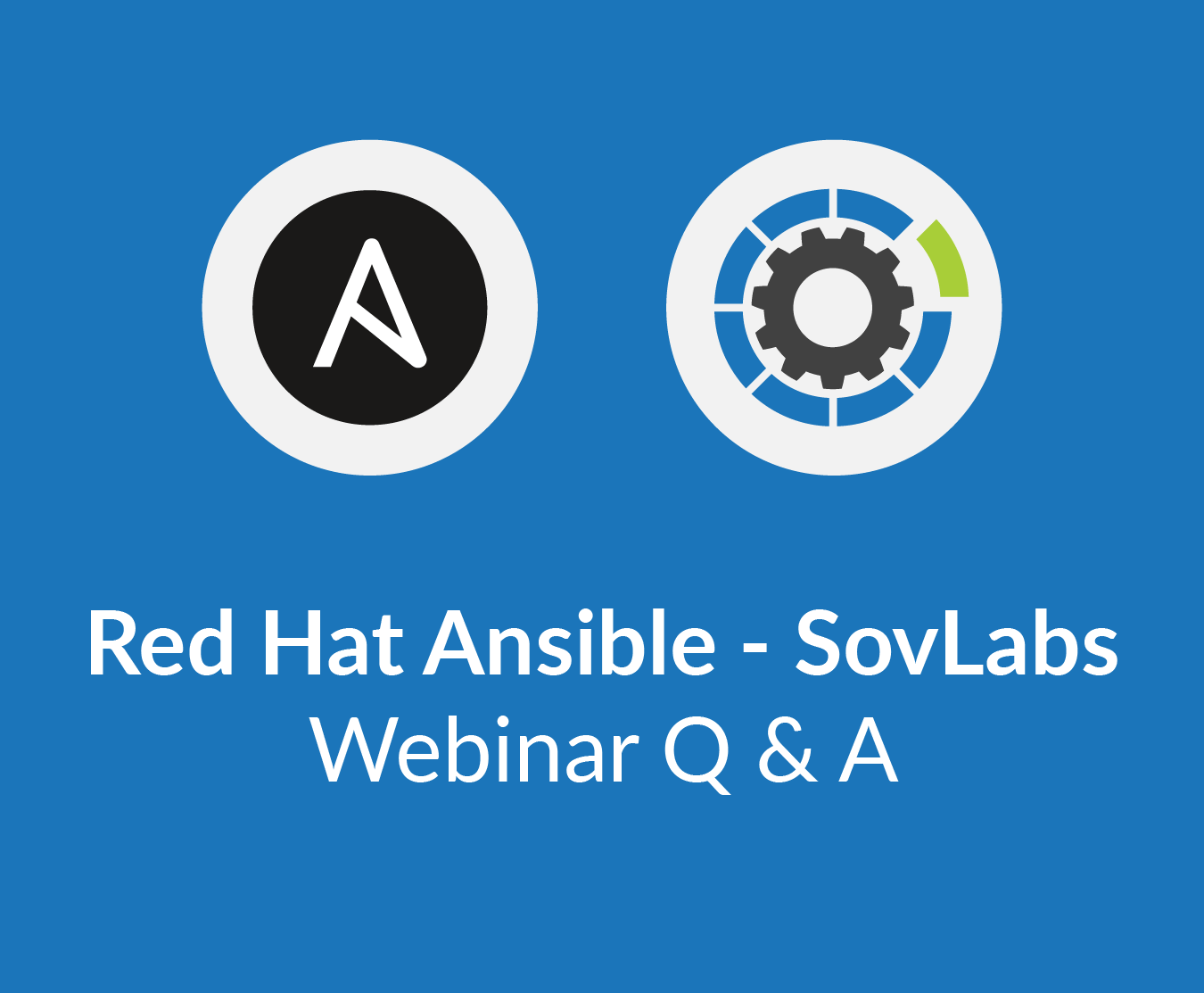Red Hat Ansible – SovLabs Webinar Q&A Recap

On Wednesday, May 22, SovLabs teamed up with Red Hat Ansible to offer a deep dive technical webinar, “Best Practices for Integrating vRealize Automation and Ansible Tower.” You can watch webinar in its entirety on the Red Hat Ansible website here and read our summary of the webinar here. Below is a summary of the brief Q&A session at the end of the webinar.
Question 1. When you set this up using dynamic inventory scenario, is the job template used for platform upgrade or trip remediation?
Ansible: “It’s a common question. If they have some type of existing state where they’re pulling it though dynamic inventory for the first time we want them to use Ansible to bring that system up to speed, so certainly within the scope. It depends on how you define the workload and ultimately what you want that automation to do. We’re pretty flexible in how we allow job templates to interact with systems. ”
SovLabs: “It comes down to the use case. My answer is all of the above. When you’re inventorying those machines, if you want to get them up to compliance with your new standard of how machines are currently being deployed — maybe there are certain things that haven’t been associated with them or applied to them or whatever — you can associate those job numbers with those inventories inside of Ansible Tower to achieve that.
Question 2. What version of vRA is this compatible with?
The CM framework version of the plugin is compatible with vRealize Automation Enterprise 7.5 and higher. The non-CM framework version goes back to vRealize Automation 7.3, and does not require the Enterprise license.
Question 3. Is the relationship between inventory and end point 1:1?
The end point and inventory relationship is 1:1 for the CM framework version of the plugin, but not necessarily with the non-CM framework version. With the non-cm framework version, you have the ability to create these inventory profiles. So your static inventory is tied to an endpoint but can create multiple static or dynamic inventory profiles and associate them with many different endpoints as you see fit. You can then patch these to your deployments in some way whether you put them into a blueprint or drive it in dynamically based on the outcome you want to create.
We appreciate the questions! Thank you again to everyone who attended the webinar.
Related Blogs

The Future of Cloud Cost Management and Optimization is Here with CloudBolt
It’s an exciting time to be in the Cloud Cost Management and Optimization space. The landscape is quickly changing as…

